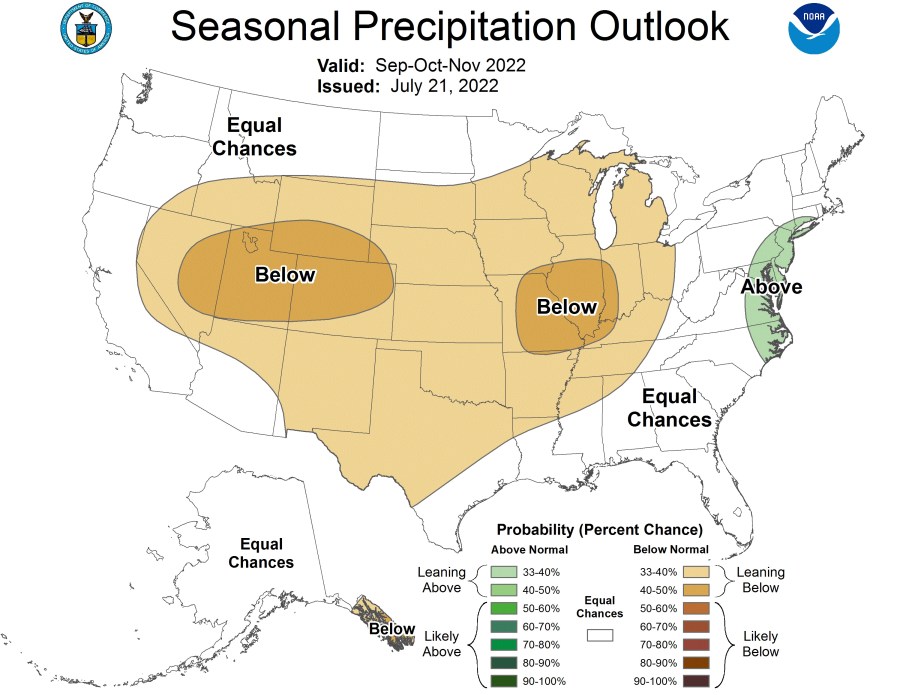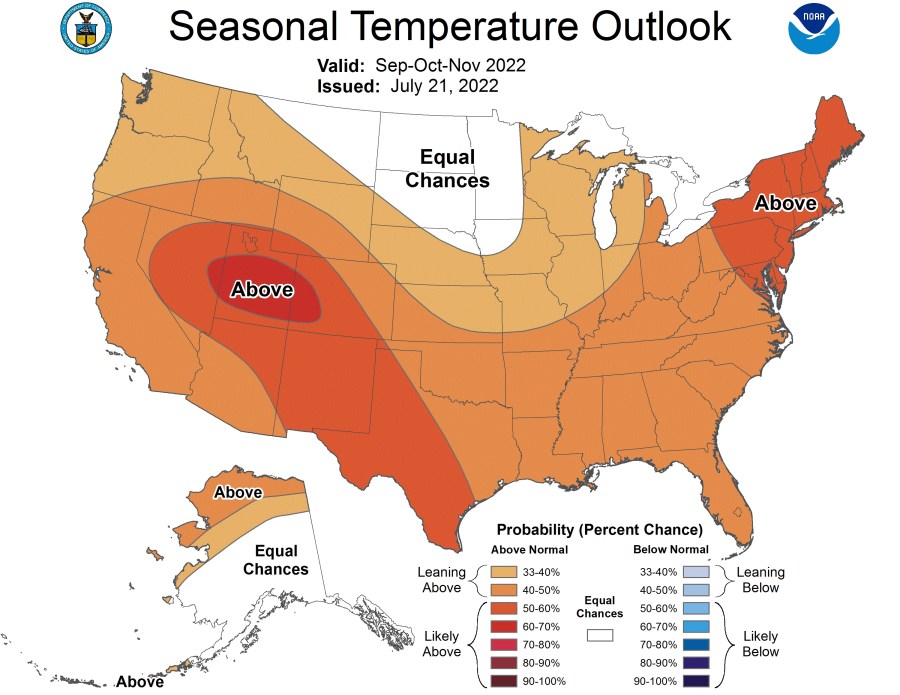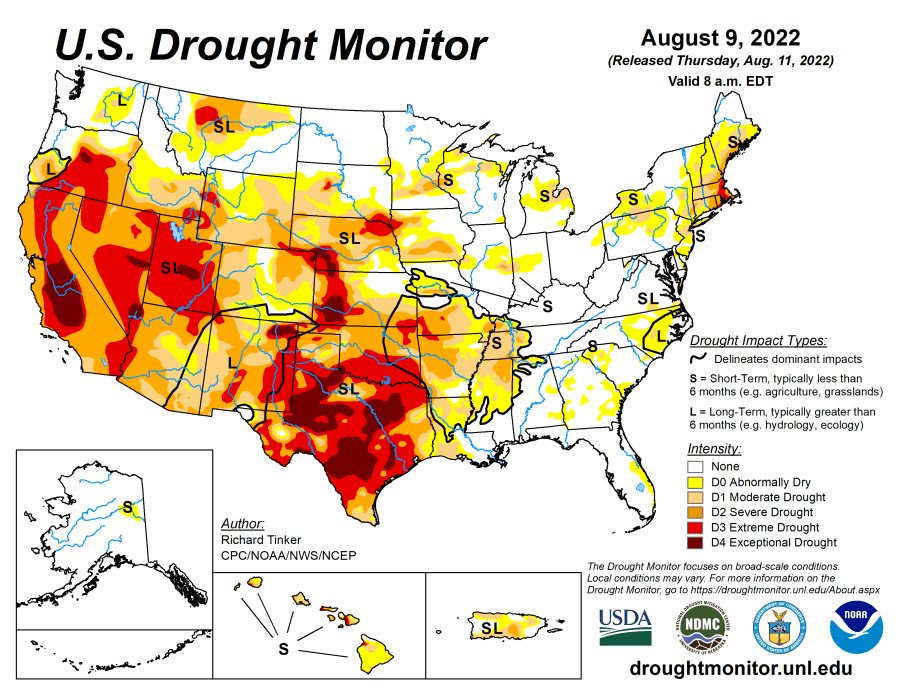La Niña just won’t quit: What that means for fall weather

(Getty Images)
(NEXSTAR) – We’ve been stuck with La Niña for a long time – and, according to the latest National Weather Service outlook, we’re not getting rid of her just yet. There’s an 80% probability La Niña conditions persist between September and November, which will have an impact on fall weather around the country.
La Niña can mean drier conditions in the fall for a big swath of the country, NWS meteorologists explain. The precipitation outlook from September through November shows it’s likely to be drier-than-normal across pretty much the entire central U.S., from Nevada in the West to Ohio in the east, the upper Midwest and Great Lakes in the north down to Texas in the south.
Only a small part of the mid-Atlantic region is expected to have an especially wet fall, while the rest of the coastal states have an equal shot of a wet, dry or normal season.

When it comes to temperatures, most of the country is favored to see above-normal temperatures this fall. According to the latest models, Utah, western Colorado and the Northeast look most likely to see above-normal heat.

The warm temperatures and potentially dry skies are an ongoing drought concern, a National Oceanic and Atmospheric Administration spokesperson told Nexstar Thursday. Another La Niña winter would likely mean making a very bad drought even worse for the band of states from California to Texas. The latest map from the U.S. Drought Monitor already shows extreme and exceptional drought conditions in many parts of the region.

Another La Niña impact is on hurricane season in the Atlantic, which runs through November. La Niña years often correspond with busy and especially destructive hurricane seasons, and this year NOAA expects somewhere between three and five “major” hurricanes to form.
After November, the probability La Niña continues drops down. By the start of 2023, there’s a less-than-50% chance we’re still in a La Niña patter. However, NOAA forecasters caution that’s a long ways out, and so the forecast is less reliable.
If La Niña does end in the winter, we’ll likely shift into an “ENSO neutral” pattern, which means we’ll neither be in La Niña nor El Niño.










